He Mattered. Harlan Ellison Makes His Exit
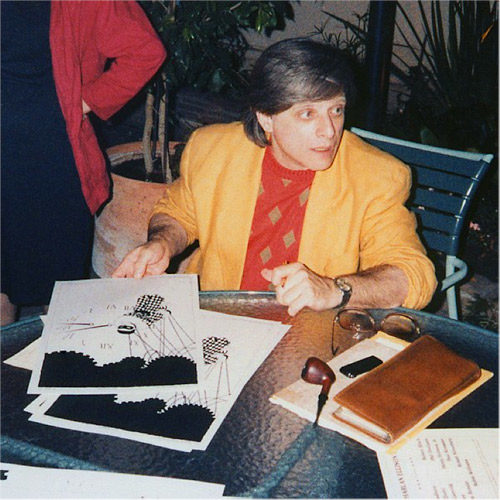
How do you memorialize genius? When you’re confronted with the indisputable evidence that a creative mind left behind more than 1,700 short stories, screenplays, novellas, television scripts, comic book scripts, essays and articles, where do you begin? Perhaps you take the author’s own advice from the introduction of his short story, “Night Vigil”, which is “DO THE DAMNED JOB. Just do it.” In that case, you simply begin with fact that Harlan Ellison died on Thursday. He was 84.
A staggeringly influential and award-winning writer, Ellison cultivated a legion of fans for his ability to slip effortlessly between genres and formats, his ability to dissect the culture, and his hard-nosed persona. His worked challenged social norms and ills while asking larger questions about existence. He did not shy away from harsh reality, and had no qualms about shocking the reader. Despite his well-earned reputation for being combative, Ellison’s friends frequently noted his generosity, with many writers posting on social media after his passing about various times when Ellison would call to check in on a sick child or to express condolences upon a familial loss.
Born in Cleveland in 1934, Ellison broke into writing with two short stories published in the Cleveland News in 1949, The Gloconda and The Sword of Parmagon. He moved to New York in 1955, pursuing his writing career. In two years, he published more than 100 stories before serving in the U.S. Army from 1957 to 1959.
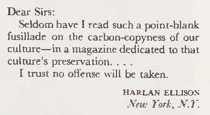
After his service, Ellison leaned fully into the writing and constant motion that would mark his life. It’s frankly impossible to list his work and activities. It’s a challenge to even list the highlights. He participated in the Selma marches led by Martin Luther King, Jr. He worked for Disney for one day but was fired for inappropriate jokes. He wrote for a number of classic television series, including The Twilight Zone, The Outer Limits, and Star Trek; his screenplay for the Trek episode “The City on the Edge of Forever” earned a Writer’s Guild of America Award and a Hugo Award after it aired in 1967 (The full episode of “The City on the Edge of Forever” is available for viewing at StarTrek.com).
A number of Ellison’s works have been adapted for other media. The novella A Boy and His Dog was filmed in 1975. Dark Horse Comics ran a series called Harlan Ellison’s Dream Corridor featuring popular comic writers and artists interpreting various works, with collections printed in 1996 and 2007.
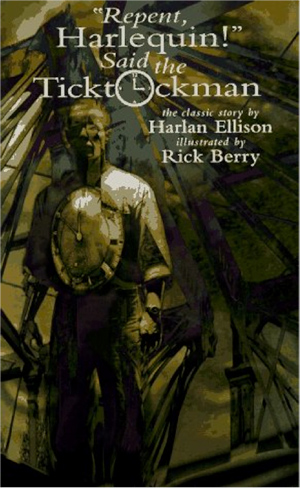
It is perhaps his robust collection of short fiction for which he is best known. Though Ellison resisted the easy categorization of being called a “science-fiction writer”, he nevertheless made a major impact on science-fiction, fantasy, horror, crime, and more with his easy transitions and combinations of subject matter. Ellison adapted “Soldier From Tomorrow” into the “Soldier” episode of The Outer Limits, and later successfully sued James Cameron for uncredited similarities to The Terminator; those films now carry a creator credit for Ellison. “Repent, Harlequin! Said The Ticktockman” won a Hugo Award, a Nebula Award, and is acknowledged as one of the most reprinted short stories in the English language.
Other writers frequently point to Ellison as both inspiration and mentor. In his non-fiction treatise on horror, Danse Macabre, Stephen King devoted considerable space to Ellison, mining many quotes from their correspondence and friendship. When King asked Ellison to describe himself and his work, Ellison’s lengthy answer finished with, “From time to time some denigrater or critic with umbrage will say of my work, ‘He only wrote that to shock.’ I smile and nod. Precisely.”
Ellison married his fifth wife, Susan, in 1986, and they remained together until his passing. At her request on Thursday, a statement announcing Ellison’s death was released. The statement included a final quote from Ellison. It read, “For a brief time I was here, and for a brief time, I mattered.”
The Lost Art of the Phone Call
For the better part of the life of the telephone — more than 100 years — a phone call was an event. The jarring ring would set a household in motion to discover what the mysterious caller had to say.
The family phone had its own table to rest upon, and a pen and notepad waited nearby in case someone needed to take an important message. If you missed the call, you were missing out.
Today, we might be missing out more than ever.
The flat devices we now carry around like life support can hardly be called phones anymore. Since 2007, Americans have been texting more than calling, and in 2015 an Informate report found that we send more than five times as many text messages as phone calls. Some recent reports even claim that 40 percent of 18-24 year-olds are anxious about speaking on the phone. Smartphone users — particularly younger ones — are communicating more overall, but the trend of typing it out is killing some crucial aspects of conversation.
The proclivity to text instead of call is about control, according to Ken Sereno, an expert in interpersonal communication at University of Southern California. “When you use text or e-mail, you have a chance to compose yourself before you respond, and you can carefully choose the words you say,” Sereno says. While it may be a comfort to present a polished version of oneself in lieu of the awkward and messy affair of “going live,” Sereno says text messaging leaves out some important aspects of conversation like vocal intonation, rate of speech, and pauses: “You can only make a judgement based upon your own interpretation of the text, and those are made based on past experiences.”
If someone responds to your knee-slapper text with “lol,” they might be lying, but you know they understood your punchline. You probably have experience with the “laughing out loud” abbreviation, even if you’re unfamiliar with the more esoteric diminutives, “lolz” and “I’m dying [laughing].” But you’re still not experiencing their reaction. The rich connection of a shared chuckle is lost, along with the inevitable risk of your quip landing flat.
This is all to say that text communication is… boring. And formulaic.
MIT professor Sherry Turkle studied the communication habits of each generation for her book Reclaiming Conversation: The Power of Talk in a Digital Age, and she notes that the aversion to real-time talking is intergenerational. The Guggenheim fellow explains, “The anxiety about spontaneity and the desire to manage our time means that certain conversations tend to fall away.” Namely, the ones in which we discover something unexpected about each other. An instant message-based relationship — unsurprisingly — delivers the lowest amount of emotional connection while giving users the illusion of it, or at least the absence of loneliness.
Turkle follows the phone phobia of 2008 and ’09 high school graduates into their post-college careers, where phone conversations and personal connections are often a necessary undertaking. The millennial group finds dialing others to be “exhausting and, whenever possible, something to avoid,” and “very few will use the phone unless specifically instructed to do so.”
Worse yet, the calls that are being dialed are coming from robot salespeople and scammers. If you had a feeling that “Rachel from cardholder services” is calling more than ever lately, you aren’t imagining things. Last month, the number of robocalls was at an all-time high — more than quadruple the numbers from fall of 2015. It’s no wonder that no one wants to pick up.
The phone call appears to be in danger of becoming a bygone oddity if current trends keep up. The implications for romance, family, and the workplace could be severe and lasting.
We have another, perhaps better, option, though, and it’s been gaining traction for years: video calling. In a Cyberpsychology study of 58 female college students, video calling was found to be only slightly less personal than in-person conversation, as measured by empirical signals of bonding like affirmative nods, leaning in, and the Duchenne smile: “Video chat, which affords the ability to exchange both verbal and visual cues, more closely resembled in-person communication in terms of bonding than it did [instant messaging].”
To date, the feature hasn’t yet prompted a cottage industry of anxiety-induced masks and prostheses as David Foster Wallace satirically predicted in Infinite Jest, but video calling is taking off. Just this year, Snapchat and Instagram — two wildly popular apps among Millennials and Generation Z — have added video chat options. Along with Skype, FaceTime, Messenger, WhatsApp, and Zoom, that makes for a host of options for video calls that can include up to 50 participants.
“People use live video to just hang out,” Facebook founder and CEO Mark Zuckerberg said at the company’s annual conference in May. “Hanging out” seems far less stressful than “having a conversation,” particularly if a handful of people are on the line. Teens use group video chatting more often than adults, and they use it for everything from homework to gossip. While it may trigger the anxiety of real-time communication, the presence of several other friends can make a call seem more casual. Also, teenagers value privacy, and a video call cannot likely be accessed later on by parents like a text message can.
The future of communication won’t likely resemble any romantic notion we have of the past, but that doesn’t mean we shouldn’t take the time to evaluate the outcomes of our new conversational spaces. Rapid advancement can make that a difficult task. The value of meaningful personal connection should be the focus of any communication technology, and, since it’s a natural human inclination, perhaps a balance can arrive organically. Then again, synthetic telepathy could be just around the corner.
Big Rocks and Rock Stars: An Unlikely Alliance Tries to Save the World

Warning: objects in space may be closer than they appear. That type of interstellar awareness stands out as a primary feature of International Asteroid Day, recognized around the world on June 30. More than 2500 events in 193 countries will mark this campaign to teach the Earth’s population about asteroids, the danger of impacts, and what communities can do to help protect the planet.
The origins of Asteroid Day come from a seemingly unlikely source: Queen guitarist Brian May. The Rock and Roll Hall of Famer also happens to hold a Ph.D. in astrophysics from Imperial College in London. As such, May was Chancellor of Liverpool John Moores University from 2008 to 2013 and was announced as a member of NASA’s New Horizons team in 2015. Even with this background, music still served as the catalyst for the celebration.
May had the opportunity to compose music for a film for director Grigorij Richters in 2014. That film, 51 Degrees North, told the tale of an asteroid strike on London and its aftermath. May urged Richters to show the film at the Starmus Festival of science communication and art. The screening kicked off discussions among a number of other prominent scientists and entertainers, which led to May introducing Richters to the B612 Foundation, an American non-profit that deals with early asteroid detection. The outcome of all these meetings was the formation of Asteroid Day, with the four official founders being May, Richters, B612 COO Danica Remy, and Rusty Schweickart, an Apollo 9 astronaut and B612 co-founder. June 30 was set as the date as it was the anniversary of the Tunguska Event in Russia in 1908, an explosion attributed to a meteoroid crash that wiped out 770 square miles of forest.
Sarah Brightman and Brian May will be among the dozens of notables joining Professor Brian Cox on the Asteroid Day LIVE Broadcast. (Via AsteroidDay.org)
This year, the United Nations-sanctioned program will combine live events around the world with the Asteroid Day LIVE broadcast from its website. That will be hosted by Professor Brian Cox and a number of other experts and celebrities. Official events in the United States include Asteroid Awareness Day at the Museum of Flight in Seattle, Space Rock! at the Fernbank Science Center in Atlanta, and more than a dozen others.
If you were skeptical that the effort to raise asteroid awareness was all rock stars and Armageddon fantasists, note that NASA and the ESA (European Space Agency) just confirmed plans for a co-operative asteroid deflection mission. The DART (Double Asteroid Redirection Test) is set for 2022, and involves the controlled crash of a spacecraft into the Didymos asteroid in an effort to test if its course can be effectively altered.
Matt Brady, science teacher and co-creator of TheScienceOf.org, explains why events like Asteroid Day and the NASA/ESA mission are necessary. He says, “The bad thing about asteroids is that movies and television have given us these big ideas of last-minute saves or plans that can limit the damage. The real plans are a lot more boring and a lot more science-based, but have the potential to save us all. We’ve just got to decide, as a population, that the idea of going out like the dinosaurs is something that we really want to avoid.”
Local News
It was in the middle of a modest home, located in the middle of nowhere, that a sigh issued forth and seemed to pervade every nook and every cranny. Any wind sweeping over the grassland that surrounded the home for miles in all directions, grown brown during the winter months, would have sounded just the same. In point of fact, the sigh in question originated in the middle of Mr. Reed’s chest, and escaped his lips as he sank down into the middle of his armchair after his supper.
“Let’s see what’s on TV,” he muttered to no one in particular, once he reclaimed the breath that had escaped him. And, being a man of his word, he lifted the remote and began a thorough survey of the evening’s programs, looking very much like a bored king forced atop his throne, wielding a scepter to impose his will, head askance either due to the weight of the crown or else the weight of sleep, which slowly forced by turns his chin to his chest and his ear to his shoulder.
Just as one ear succeeded in making contact with the shoulder, resulting in Mr. Reed’s mouth to drop open in sleep, his wife walked in and asked whether he had indeed found something on TV. It would be impossible to state, however, if she was genuinely desirous of receiving an answer, or merely asked the question through force of habit — asked, one would think, every night without interruption since their last child had left the house several years prior.
As Mrs. Reed collapsed onto her chair, Mr. Reed regained consciousness and coughed, or feigned to cough, as though to prove he had not really been asleep. Their two chairs, looking like enormous cubes with a seat and a back cut into them, were exactly alike except in their orientation in the room: Mr. Reed’s had planted itself in the middle of the room, beside a small coffee table exclusively used to support cabernet, and beneath a lamp which once in a great while illuminated an open book or magazine, but more often than not illuminated only his bobbing head and drooping eyelids. Mrs. Reed’s chair apparently felt some aversion toward its twin, having wedged itself against the left-hand wall and behind a much larger coffee table piled high with a tremendous amount of beads, needles, threads, and various books on the subject, looking like the fortress walls of a jaunty castle.
The Saturday Evening Post Great American Fiction Contest is underway!
Enter for a chance to win $500 and have your work appear in the magazine that published Zora Neale Hurston, F. Scott Fitzgerald, Anne Tyler, and Kurt Vonnegut!
To enter, visit saturdayeveningpost.com/fiction-contest.
“Here,” said Mr. Reed, gruffly, tossing the remote like a stone from a trebuchet over the castle walls and into Mrs. Reed’s outstretched arms. “Nothing on.”
“Well, there has to be something on,” she said.
“Friday nights are terrible; there’s nothing on.”
Unwilling to believe this without checking for herself, Mrs. Reed pulled up the guide and began methodically clicking through every channel.
“There has to be something on,” she repeated as she approached the end of the listings.
If Mr. Reed was the king, then Mrs. Reed was undoubtedly the queen, holding the scepter in both hands, pronouncing judgment on the offered entertainment with a downward stroke of her thumb. When she reached the end of the listings, she started the whole process over, either believing she chanced to miss something worthwhile, or believing the guide contained trickery and would present something different after an interval of one minute. If one were to listen closely, one would have heard her muttering again, “There must be something on,” but of course Mr. Reed was not in the listening mode, having dropped off to sleep by watching the rhythmic scrolling through the TV guide.
The evening progressed in such fashion quite slowly, as it always did, with Mr. Reed occasionally waking and opening his copy of Churchill: A Life. He, now being on page 872, would read a little bit about that august person’s youth and upbringing, and would close the book again on page 873, still mired in childhood and thoroughly exhausted from the effort. Mrs. Reed, meanwhile, having eventually succeeded in landing upon a channel, watched hardly a second of it, but immediately took up her beads and needles and thread so as to ward off sleep.
If allowed to proceed unchecked, there is no telling what might have happened to Mr. and Mrs. Reed. Very likely they would have entered a twilight zone, condemned to sink ever deeper into their chairs — he asleep or lost in Churchill’s youth, she oblivious behind a flurry of beading — to wink eventually out of existence. Such, however, was thankfully not meant to be, and into this darkness and silence was thrown a ray of light, shocking them both out of their stupor: the local news.
As the clock turned 10, Mrs. Reed turned the volume up, so as to catch every word.
“Ed,” she said, “wake up. The news is on.”
Ed mumbled something about not having been asleep and sat up.
“Oh look, it’s that new girl,” she continued. “You know, I think she does a fine job, but I’m not sure she’s mature enough to be an anchor.”
“Whatever happened to that other lady — what’s her name? Lida? I thought she was good.”
Mrs. Reed made a face and shook her head.
“I suppose she could read the news okay, but she had a terrible fashion sense. She had all those weirdly cut tops in bizarre colors, and wore those necklaces. You remember those, don’t you?”
“Course I do,” said Ed. “Whatever happened to her? She was professional.”
“They said she retired to spend more time with her family, but I don’t buy it. I think,” she said, lowering her voice conspiratorially, “there’s some difficult producer behind the scenes. It’s why they have so much turnover.”
Mr. Reed harrumphed, indicating either disbelief in his wife’s investigative abilities, or appreciation of them.
“They do seem to go through a lot of people,” he consented after a few minutes. “Like this guy, have you ever seen this reporter before? They hauled him out of somewhere and stuck him in a suit. Looks freezing out there. Poor guy.”
“Oh, lovely,” returned Mrs. Reed. “Another murder. It just gets worse and worse.”
“Doesn’t it seem that a few years ago we didn’t get these murders?”
“Don’t forget the car thefts.”
“Right. Those too. We didn’t used to have crimes like those, did we?”
Mrs. Reed thought a moment, and agreed they were a new phenomenon.
“Ah!” she yelled suddenly, pointing at the screen. “Did you see that?”
“Did I see what?” asked Mr. Reed, looking sideways at her.
Mrs. Reed pointed at the screen again. “Them, look at them. There’s bad blood there between them.”
Mr. Reed looked closely at the co-anchors on the screen.
“You’re crazy. I don’t see it.”
“Look,” she repeated. “When she’s talking, he gives her the evil eye. I bet he wishes he had Lida back.”
“They look completely normal. They’re reading the news, not best friends.”
“But they don’t joke around like he and Lida used to do, or like they do on the morning news. There’s no warmth between them.”
Mr. Reed, having never witnessed the morning news, had no answer to this charge. Instead, he returned to one of his favorite subjects when yet another reporter detailed another murder in the area.
“You know, the news has become a crime report. It’s a police blotter! There’s no work in it, either. They just trot out all the crimes as though it were news, but it’s not.”
“No, it’s not,” echoed Mrs. Reed, apparently familiar with this line of reproach.
“As though the world were not depressing enough already, you mean to tell me they can’t dredge up one or two positive — or if not positive, at least neutral and informative — stories?”
“You would think they could,” added Mrs. Reed. “For starters, why don’t they do a profile of your work at the mission? There’s plenty going on there.”
Mr. Reed gave an exhausted chuckle, as though you did not need to tell him there was plenty going on, and that “plenty” was a nice understatement.
The local crime report, however, eventually gave way to the weather.
“And here,” said Mr. Reed with a flourish of his arm to include to the weatherman, “we have the world’s tallest person.”
Mrs. Reed frowned.
“Oh, that’s not very nice,” she said. “And besides, how do you know he’s tall when you only ever see him on TV? There’s no perspective.”
“He just looks tall. You can always tell a tall one.”
“How?”
“I don’t know,” said Mr. Reed, screwing up his face so as to get a bit of wisdom out. “It’s something about his bones.”
“His bones?”
“Yes, his bones. And his clothes. They hang on him like clothes always hang on a tall person. And here we go, look at him! Did you catch it?”
Mrs. Reed laughed.
“It is strange,” she said, “but he does seem to do it.”
“Why would he do it, is the question,” asked Mr. Reed. “Why would a weatherman start the show without wearing his jacket, and then midway through — always at the same point midway through — put his jacket back on again? The camera cuts away and then — boom! — there he is in the jacket. Houdini, this guy. It just doesn’t make any sense.”
Here he screwed up his eyes once more and leaned forward, as though to indicate to this inscrutable weatherman that he was onto him, and would be watching his behavior closely.
“And now we have,” said Mr. Reed, “for the finale, the Meathead.” Upon finishing this declaration, he looked over at his wife and smiled, for she had said “meathead” at the same time.
“You know,” Mrs. Reed said, “it isn’t very nice, but he is a meathead. Look at the size of his neck! And that watch! And I am sick of hearing about football. It’s all football, all the time. ‘Today,’” she quoted, “‘we’re only 95 weeks away from Browns preseason.’ And in the meantime we need to hear about some Division II team no one cares about that’s 1-12.”
“Except for him,” said Mr. Reed, pointing to the meathead.
“Did I ever tell you I posted on their Facebook page about this? I wrote them a very polite but honest note about how there are more sports besides football, and how it would be nice to hear about them every once in a while.”
“It would be nice,” added Mr. Reed.
“And you know what?” she asked, aware that he knew very well what. “They deleted the message! Couldn’t take a little honesty, I suppose. At least I told them what I think.”
“Yes you did, my dear. Chin up, though. With the turnover on this channel, we’ll get someone new soon.”
Mrs. Reed grumbled something about it being in all probability another meathead, and that such would undoubtedly be the death of her.
At the conclusion of these grumblings, and with the conclusion of the local news, Mr. Reed made the herculean effort of extricating himself from his chair, emitting in the process a sound more naturally heard in a gym beneath 500 pounds of metal. Once upright, he stretched his arms out to the sides, made a brief, though wildly unsuccessful, attempt to touch his toes, and finished his floor routine with a yawn that threatened to overtake his face.
“Well,” he said, with the air of one who says the same thing every night, “I’m heading in. Are you coming to bed soon?”
“In a minute,” said Mrs. Reed, giving her familiar refrain. “I just have a few more knots to make and then I’ll be done for the night.”
Here she looked up from the nearly completed necklace in her hands and the two met each other’s gaze from across the room. It only lasted a moment, but there was an undeniable sense of tenderness in the act; they appeared to congratulate the other on making it through another evening, as though they, in defiance of innumerable forces working to drive them apart and into their own silent worlds, felt victorious in keeping the silence at bay.
Movies for the Rest of Us with Bill Newcott: Jessica Chastain, Paul Rudd, and the Beatles
Bill Newcott reviews Woman Walks Ahead starring Jessica Chastain, Michael Grayeyes, and Sam Rockwell; Paul Rudd and Steve Coogan playing and odd couple for our time in Ideal Home; and the re-release of the Beatles’ psychedelic classic, Yellow Submarine. He also looks at the latest out on home video, including Chappaquiddick and Walt Disney’s Peter Pan (including an interview with the voice of Wendy, Kathryn Beaumont).
News of the Week: Advice for Graduates, Ugly Dogs, and How to Make Firecracker Strawberries
Be Kind, Save Money, and Wear Sunscreen
It’s that time of year when young people are graduating from high school and college. It’s also the time of year for commencement speeches and general advice for those graduates before they go off to summer jobs, a new city, or the career they’ve chosen.
We’ve all read (or at least heard about) the classic essay by Chicago Tribune writer Mary Schmich that is often attributed to either Kurt Vonnegut or director Baz Luhrmann (it doesn’t help that the essay at the paper’s site doesn’t have Schmich’s name on it at all). She gives some great advice: wear sunscreen, keep in touch with friends and family no matter where you live, do not read beauty magazines, remember the compliments you receive, and forget the insults. That’s all great advice no matter what age you are.
But there are other pieces of advice that young people would be smart to heed. Gretchen Rubin, author of The Happiness Project, has 12 rules she tries to follow, which include being polite and fair and not letting the perfect be the enemy of the good. Frances Bridges at Forbes says that things are going to get harder before they get better, and you should always be smart about your money; and writer George Saunders suggests that, no matter what you do in life, err in the direction of kindness.
I would add to that a few I’ve learned. One is that good credit is more important than love (you’ll find love, but you don’t want to start out by messing up your credit); working is usually better than not working; and if you meet people who tell you that your high school or college years will be the best years of your life, don’t listen to them, because that’s just depressing.
Also: If you ever find yourself on The Price Is Right, never bid one dollar unless you’re the last bidder. The person after you will just bid two dollars and you’ll look like an idiot.
Zsa Zsa
One person’s ugly is another person’s cute, but I think that even people who tend to lean toward the latter have to admit that this dog is pretty darn the former.
Zsa Zsa, a 9-year-old English bulldog from Minnesota with questionable facial and body features, won the annual World’s Ugliest Dog contest last week. She and her owners won $1,500 for capturing first prize.
I think it’s the mouth, those teeth, and that darn giant tongue that’s always hanging out.
Something You Don’t Know About Superman
Shortly after reading Troy Brownfield’s great piece on the 80th anniversary of Superman, I came across an interesting little factoid on how kryptonite entered the Man of Steel’s world.
The voice of Superman on the Adventures of Superman radio show was Bud Collyer, whom you may also know as the host of To Tell the Truth (the ’60s version, not the current monstrosity on ABC). The writers came up with kryptonite, which paralyzes Superman, so Collyer could have some time off from the show. Since all Superman would be doing that week was moaning and groaning, they just got another actor to make those sounds.
It’s funny how something that is so closely associated with Superman actually made its first appearance on the radio show and not in the comic book.
The Words We Always Misspell
My friend Ken Levine has a fun post at his site about the words he always misspells (a word that itself is one I’m sure a lot of people misspell). We all go through this, even if we’re good spellers in general. There are just some words that get us every time. For Ken, it’s privilege, jeopardy, and pigeon.
I once lost a grade school spelling bee on Massachusetts. I spelled it correctly, but forgot to say “capital M,” and my English teacher wouldn’t give it to me. Still bugs me 40 years later. Thanks a lot, Mr. Pike.
Three words I always misspell are miniscule, pasttime, and reccommend. See?!
RIP Harlan Ellison, Charles Krauthammer, Donald Hall, Richard Harrison, Dan Ingram, Deanna Lund, and Koko
Harlan Ellison was a highly influential and opinionated writer and editor who changed the world of science fiction, fantasy, and pop culture in general over the past six decades. He wrote thousands of short stories, novels, novellas, essays and columns. He also wrote for several TV shows including Star Trek (the classic episode “City on the Edge of Forever”), The Outer Limits, The Man From U.N.C.L.E., the 1980’s reboot of The Twilight Zone, and Babylon 5, as well as the movie A Boy and His Dog. Ellison died yesterday at the age of 84.
Here’s Ellison’s official site, where you can read what fans and friends are saying in the forum.
Dr. Charles Krauthammer started out in the field of psychiatry after graduating from Harvard Medical School but found a second career as a conservative writer and pundit. He got his start as a speechwriter for Walter Mondale and also wrote for places like The Washington Post and The New Republic, and was a commentator on Fox News. His terrific book of essays, Things That Matter, sold over a million copies. Krauthammer had been paralyzed since a college diving accident, but he actually succumbed to cancer last week at the age of 68.
Donald Hall was a poet and essayist who was U.S. poet laureate from 2006 to 2007. He died last Saturday at the age of 89.
Richard Harrison was “The Old Man” on the popular History Channel series Pawn Stars. He died Monday at the age of 77.
Dan Ingram was a veteran New York disc jockey. Some people even call him the best disc jockey of all time. He started at small radio stations in the late ’50s and went on to work at such places as WABC, WKTU, and WCBS. He died Sunday at the age of 83.
Deanna Lund was an actress probably best known as Valerie on the sci-fi television series Land of the Giants. She died last Friday at the age of 81.
My two favorite stories of Koko the gorilla who learned sign language? She once destroyed a sink, and when her handlers came into the room to find out what had happened, Koko signed to them that the cat had done it. And there was the time that Mr. Rogers visited Koko and she took off his shoes, because that’s what he always did on his TV show. Koko died last week at the age of 46.
Quote of the Week
“Man, summer is going to suck.”
—Meet the Press host Chuck Todd, on the upcoming political battle to replace retiring Supreme Court Justice Anthony Kennedy
This Week in History
First TV Western, Hopalong Cassidy, Premieres (June 24, 1949)
It’s hard to believe now, but at one point, westerns were the most popular genre of TV show, with a staggering 26 shows on the air in 1959. At first the Hopalong Cassidy series was just edited versions of the films, but NBC later created original episodes. William Boyd played the cowboy and became so popular that it led to a theme park, magazine covers, and endless merchandising.
George Orwell Born (June 25, 1903)
Here’s what the Post had to say about Orwell’s classic novel 1984 in 1972.
This Week in Saturday Evening Post History: Row, We’re Out of Gas (June 27, 1959)
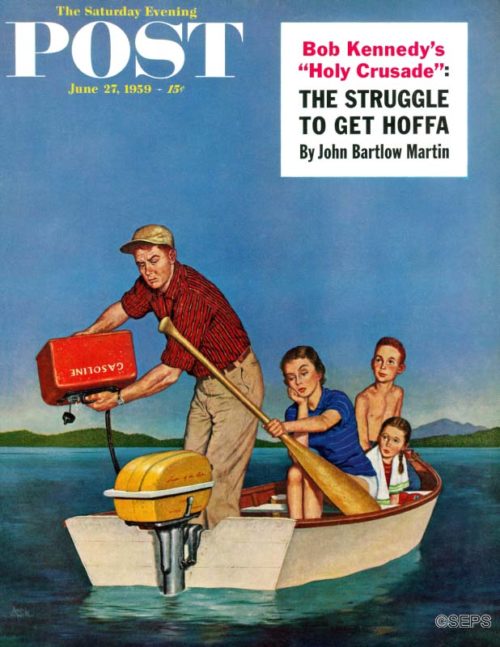
Amos Sewell
June 27, 1959
I’ve been on a boat exactly one time in my life, about 35 years ago — a boat a lot like the one featured in this Amos Sewell cover. And I think I had as much fun as the family in this boat seems to be having. We didn’t run out of gas, I’m just not a boat guy.
July 4 Recipes
At Christmas we see a lot of red-and-green-oriented recipes, and on Halloween it’s orange and black. For the Fourth of July the colors are obviously red, white, and blue. Sometimes you can tell the recipe creators are really stretching things to make ordinary foods with those colors, but I think I found a few that look pretty fantastic.
How about these Firecracker Strawberries, which are first soaked in vodka and then decorated with marshmallow (that’s the white) and sprinkles (for the blue)? Or how about Ina Garten’s Flag Cake, which looks like it might take a while to decorate but is rather impressive? If you’re looking for something savory rather than sweet, how about this Red, White, and Blue Potato Salad? The blue color is actually purple potatoes, but we won’t tell anyone if you don’t.
It’s odd when a holiday lands smack in the middle of the week, but maybe that will give you an excuse to take Thursday and Friday off, too.
Next Week’s Holidays and Events
World UFO Day (July 2)
It’s on July 2 to mark the day that a spacecraft (supposedly) crashed in Roswell, New Mexico, in 1947. You can go to the World UFO Day site to become an official ambassador, or you can just watch Earth vs. the Flying Saucers again.
Wimbledon Begins (July 2)
The top seeds for the tournament at the All England Lawn Tennis and Croquet Club are Roger Federer and Simona Halep. They’ve also given Serena Williams, whose ranking dropped considerably after missing a year to have a baby, the 25th seed.
By the way, you don’t have to call it the All England Lawn Tennis and Croquet Club. But make sure you say Wimbledon and not Wimbleton.
The New Nomads: Living Full-Time on the Road
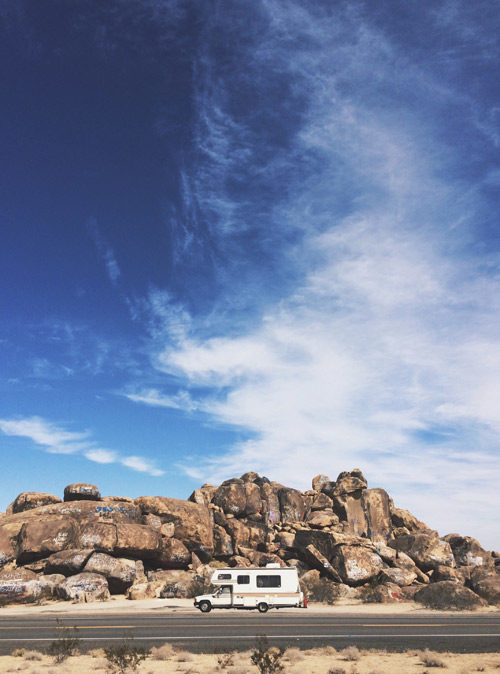
In Drayton, North Dakota, a former San Francisco cabdriver, 67, labors at the annual sugar beet harvest. He works from sunrise until after sunset in temperatures that dip below freezing, helping trucks that roll in from the fields disgorge multi-ton loads of beets. At night he sleeps in the van that is his home.
In New Bern, North Carolina, a woman whose home is a teardrop-style trailer — so small it can be pulled with a motorcycle — is couch surfing with a friend while hunting for work. Even with a master’s degree, the 38-year-old Nebraska native can’t find a job despite filling out hundreds of applications in the past month alone. She knows the sugar beet harvest is hiring, but traveling halfway across the country would require more cash than she has. Losing her job at a nonprofit several years ago is one of the reasons she moved into the trailer in the first place. After the funding for her position ran out, she couldn’t afford rent on top of paying off student loans.
In San Marcos, California, a 30-something couple in a 1975 GMC motorhome is running a roadside pumpkin stand with a children’s carnival and petting zoo, which they had five days to set up from scratch on a vacant dirt lot. In a few weeks, they’ll switch to selling Christmas trees.
In Colorado Springs, Colorado, a 72-year-old van dweller who cracked three ribs doing a campground maintenance job is recuperating while visiting with family.
There have always been itinerants, drifters, hobos, restless souls. But now, in the third millennium, a new kind of wandering tribe is emerging. People who never imagined being nomads are hitting the road. They’re giving up traditional houses and apartments to live in what some call “wheel estate” — vans, secondhand RVs, school buses, pickup campers, travel trailers, and plain old sedans. They are driving away from the impossible choices that face what used to be the middle class. Decisions like: Would you rather have food or dental work? Pay your mortgage or your electric bill? Make a car payment or buy medicine? Cover rent or student loans? Purchase warm clothes or gas for your commute?
For many, the answer seemed radical at first.
You can’t give yourself a raise, but what about cutting your biggest expense? Trading a stick-and-brick domicile for life on wheels?
Some call them “homeless.” The new nomads reject that label. Equipped with both shelter and transportation, they’ve adopted a different word. They refer to themselves, quite simply, as “houseless.”
From a distance, many of them could be mistaken for carefree retired RVers. On occasions when they treat themselves to a movie or dinner at a restaurant, they blend with the crowd. In mindset and appearance, they are largely middle class. They wash their clothes at laundromats and join fitness clubs to use the showers. Many took to the road after their savings were obliterated by the Great Recession. To keep their gas tanks and bellies full, they work long hours at hard, physical jobs. In a time of flat wages and rising housing costs, they have unshackled themselves from rent and mortgages as a way to get by. They are surviving America.
But for them — as for anyone — survival isn’t enough. So what began as a last-ditch effort has become a battle cry for something greater. Being human means yearning for more than subsistence. As much as food or shelter, we require hope.
And there is hope on the road. It’s a byproduct of forward momentum. A sense of opportunity, as wide as the country itself. A bone-deep conviction that something better will come. It’s just ahead, in the next town, the next gig, the next chance encounter with a stranger.
As it happens, some of those strangers are nomads, too. When they meet — online, or at a job, or camping way off the grid — tribes begin to form. There’s a common understanding, a kinship. When someone’s van breaks down, they pass the hat. There’s a contagious feeling: Something big is happening. The country is changing rapidly, the old structures crumbling away, and they’re at the epicenter of something new. Around a shared campfire, in the middle of the night, it can feel like a glimpse of utopia.
As I write, it is autumn. Soon winter will come. Routine layoffs will start at the seasonal jobs. The nomads will pack up camp and return to their real home — the road — moving like blood cells through the veins of the country. They’ll set out in search of friends and family, or just a place that’s warm. Some will journey clear across the continent. All will count the miles, which unspool like a filmstrip of America. Fast-food joints and shopping malls. Fields dormant under frost. Auto dealerships, megachurches, and all-night diners. Featureless plains. Feedlots, dead factories, subdivisions, and big-box stores. Snowcapped peaks. The roadside reels past, through the day and into darkness, until fatigue sets in. Bleary-eyed, they find places to pull off the road and rest. In Walmart parking lots. On quiet suburban streets. At truck stops, amid the lullaby of idling engines. Then in the early-morning hours — before anyone notices — they’re back on the highway. Driving on, they’re secure in this knowledge:
The last free place in America is a parking spot.
There’s no clear count of how many people live nomadically in America. Full-time travelers are a demographer’s nightmare. Statistically, they blend in with the rest of the population, since the law requires them to maintain fixed — in other words, fake — addresses. No matter how widely they wander, nomads must be officially “domiciled” somewhere. Your state of residence is where you get vehicles registered and inspected, renew drivers’ licenses, pay taxes, vote, serve on juries, sign up for health insurance (except for those on Medicare), and fulfill a litany of other responsibilities. And living nowhere, it turns out, means you can live anywhere you want, at least on paper. So many folks opt for residency in the places with the fewest hassles — Florida, South Dakota, and Texas, which lack state income taxes, are longtime favorites — and use mail-forwarding services to stay in touch. The rules for becoming a South Dakotan are especially laid-back. Spend one night at a local motel and register with a South Dakota mail forwarding service. Then show both receipts to the state department of public safety and you’re in.
Many of these people call themselves workampers. One of them — a man I’ll call Don Wheeler — defined that term with great flair, writing in a Facebook direct message to me:
Workampers are modern mobile travelers who take temporary jobs around the U.S. in exchange for a free campsite — usually including power, water, and sewer connections — and perhaps a stipend. You may think that workamping is a modern phenomenon, but we come from a long, long tradition. We followed the Roman legions, sharpening swords and repairing armor. We roamed the new cities of America, fixing clocks and machines, repairing cookware, building stone walls for a penny a foot and all the hard cider we could drink. We followed the emigration west in our wagons with our tools and skills, sharpening knives, fixing anything that was broken, helping clear the land, roof the cabin, plow the fields, and bring in the harvest for a meal and pocket money, then moving on to the next job. Our forebears are the tinkers.
We have upgraded the tinker’s wagon to a comfortable motor coach or fifth-wheel trailer. Mostly retired now, we have added to our repertoire the skills of a lifetime in business. We can help run your shop, handle the front or back of the house, drive your trucks and forklifts, pick and pack your goods for shipment, fix your machines, coddle your computers and networks, work your beet harvest, landscape your grounds, or clean your bathrooms. We are the techno-tinkers.
The people Wheeler described make up an impressive labor force. Kampgrounds of America (KOA), a major employer of workampers, hires some 1,500 couples each year for its resorts and franchises across the country, a representative told AARP. Workamper News, a bimonthly magazine whose website features a popular job-listing service, claims to reach 14,000 members, with more joining all the time.
Of all the programs seeking workampers, the most aggressive recruiter has been Amazon’s CamperForce. “Jeff Bezos has predicted that, by the year 2020, one out of every four work campers in the United States will have worked for Amazon,” read one slide in a presentation for new hires.
Workampers are plug-and-play labor, the epitome of convenience for employers in search of seasonal staffing. They appear where and when they are needed. They bring their own homes, transforming trailer parks into ephemeral company towns that empty out once the jobs are gone. They aren’t around long enough to unionize. On jobs that are physically difficult, many are too tired even to socialize after their shifts.
They also demand little in the way of benefits or protections. On the contrary, among the more than 50 such laborers I interviewed in my first year of reporting on workampers, most expressed appreciation for whatever semblance of stability their short-term jobs offered. Take 57-year-old Joanne Johnson, who was dashing upstairs at Amazon’s Campbellsville facility when she tripped and fell, striking her head on a conveyor-belt support bar. She was bandaged up at AmCare — an in-house medical facility — and then rushed to an emergency room. The episode left her with two black eyes and nine stitches along her hairline. “They let me continue working. They didn’t fire me,” Johnson recalled warmly.
I wondered why a company like Amazon would welcome older candidates for jobs that seem better suited to younger bodies. “It’s because we’re so dependable,” suggested Johnson. “We know that if you commit to something, you do your best to get that job done. We don’t take days off unless we have to.” (While recuperating from her head wound, Johnson missed only one scheduled workday. It was unpaid.)
The folks who run CamperForce reiterate the belief that older workers bring a good work ethic. “We’ve had folks in their 80s who do a phenomenal job for us,” said Kelly Calmes, an administrator for the program in Campbellsville, during an online job seminar hosted by Workamper News. “The benefit to our workamping population being, for the most part, a little bit older is that you guys have put in a lifetime of work. You understand what work is. You put your mind to the work, and we know that it’s a marathon; it’s not a sprint. It’s kind of like The Tortoise and the Hare. We have some of our younger folks who will race through. You guys are pretty methodical — you just kind of work as you go, and work as you go — and at the end of the day, believe it or not, you both cross the finish line at about the same time.”
Many of the workers I met in the Amazon camps were part of a demographic that in recent years has grown with alarming speed: downwardly mobile older Americans. Monique Morrissey, an economist at the Economic Policy Institute, spoke with me about the unprecedented nature of this change. “We’re facing the first-ever reversal in retirement security in modern U.S. history,” she explained. “Starting with the younger baby boomers, each successive generation is now doing worse than previous generations in terms of their ability to retire without seeing a drop in living standards.”
That means no rest for the aging. Nearly nine million Americans 65 and older were still employed in 2016, up 60 percent from a decade earlier. Economists expect those numbers — along with the percentage of seniors in the labor force — to keep rising. A recent poll suggests that Americans now fear outliving their assets more than they fear dying. Another survey finds that, although most older Americans still view retirement as “a time of leisure,” only 17 percent anticipate not working at all in their later years.
“Over the last generation, we have witnessed a massive transfer of economic risk from broad structures of insurance, including those sponsored by the corporate sector as well as by government, onto the fragile balance sheets of American families,” Yale political scientist Jacob S. Hacker writes in his book The Great Risk Shift. The overarching message: “You are on your own.”
All of which is to say that Social Security is now the largest single source of income for most Americans 65 and older. But it’s woefully inadequate.
Nearly half of middle-class workers may be forced to live on a food budget of as little as $5 a day when they retire, according to Teresa Ghilarducci, an economist and professor at the New School in New York City. “I call it ‘the end of retirement,’” she said in an interview. Many retirees simply can’t survive without some sort of paycheck.
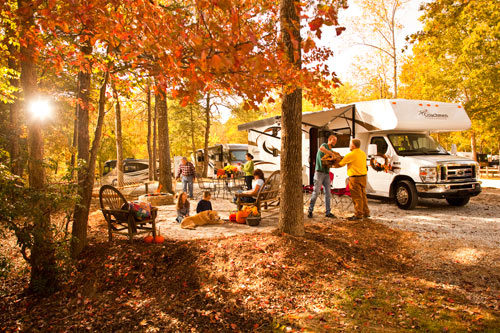
Millions of Americans are wrestling with the impossibility of a traditional middle-class existence. In homes across the country, kitchen tables are strewn with unpaid bills. Lights burn late into the night. The same calculations get performed again and again, over and over, through exhaustion and sometimes tears. Wages minus grocery receipts. Minus medical bills. Minus credit card debt. Minus utility fees. Minus student loan and car payments. Minus the biggest expense of all: rent.
In the widening gap between credits and debits hangs a question: What parts of this life are you willing to give up so you can keep on living?
Like the nomads, millions of Americans are being forced to change their lives, even if the transformations are less outwardly radical. There are many ways to parse the challenge of survival. This month, will you skip meals? Go to the ER instead of your doctor? Postpone the credit card bills, hoping they won’t go to collections? Put off paying electric and gas charges, hoping the light and heat will stay on? Let the interest accumulate on student and car loans, hoping someday you’ll find a way to catch up?
These indignities underscore a larger question: When do impossible choices start to tear people — a society — apart?
It’s already happening. The cause of the unmanageable household math that’s keeping people up at night is no secret. The top 1 percent now makes 81 times what those in the bottom half do, when you compare average earnings. For American adults on the lower half of the income ladder — some 117 million of them — earnings haven’t changed since the 1970s.
This is not a wage gap — it’s a chasm. And the cost of that growing divide is paid by everyone.
A deepening class divide makes social mobility all but impossible. The result is a de facto caste system. This is not only morally wrong but also tremendously wasteful. Denying access to opportunity for large segments of the population means throwing away vast reserves of talent and brainpower. It’s also been shown to dampen economic growth.
The most widely accepted measure for calculating income inequality is a century-old formula called the Gini coefficient. It’s a gold standard for economists around the globe, along with the World Bank, the CIA, and the Paris-based Organization for Economic Cooperation and Development. What it reveals is startling. Today, the United States has the most unequal society of all developed nations. America’s level of inequality is comparable to that of Russia, China, Argentina, and the war-torn Democratic Republic of the Congo.
And as bad as the situation is now, it’s likely to get worse. That makes me wonder: What further contortions — or even mutations — of the social order will appear in years to come? How many people will get crushed by the system? How many will find a way to escape it?
***
Excerpted from Nomadland: Surviving America in the Twenty-First Century by Jessica Bruder. © 2017 by Jessica Bruder. Used with permission of the publisher, W.W. Norton & Company, Inc. All Rights Reserved.
Jessica Bruder is an award-winning journalist whose work focuses on subcultures and the dark corners of the economy. She has written for Harper’s, The New York Times, and The Washington Post. Bruder teaches at the Columbia School of Journalism.
This article is featured in the July/August 2018 issue of The Saturday Evening Post. Subscribe to the magazine for more art, inspiring stories, fiction, humor, and features from our archives.
Carrying On: Bad Manners, Pajama Bottoms, and the Air Travel Horror Show
“Now inviting those passengers in Group 4 to board.”
Finally, my group! Not that it matters much. Once first class, members of the military, people with small children, and those belonging to various rewards levels were called, a horde of impatient passengers swarmed the gate, many hauling mammoth four-wheeled suitcases that were in clear violation of the airline’s restrictions.
Instead of the one carry-on and one personal item permitted, some fliers stacked several pieces of luggage on top of each other, while others lugged overstuffed shoulder bags and bulging backpacks fit for an Everest expedition. They rolled over toes and banged into backs, pushed aside children, and hurried past the overwhelmed attendants.
When I eventually got inside the plane for my trip from Philadelphia to Austin, the same people who’d rushed the gate were now blocking the aisle, struggling to cram their massive bags into the limited space available. It was a full flight, and the rest of us had to stand and stew while they heaved and pushed. By then, the overhead bins were near to full, and panic was setting in among those yet to reach their seats. Sneaky passengers with seats in the rear had deposited their luggage in the front of the cabin on their way back, leaving me with no place to stash my bag. I was forced to jam my carry-on as far under the seat in front of me as it would go and hike up my knees for the four-hour flight.
All of which got me to pondering: Just who is to blame for the soul-sucking horror show that air travel has become?
My first instinct is to point the finger at corporate greed. And it’s true that the airlines’ record profits and full-capacity flights — underpinned by the “ancillary fees” for baggage, food, and preferred seating — have transformed what was once a mini-adventure where you felt just a bit pampered and special, even in economy, into a grim experience that no amount of multimillion-dollar airport upgrades can assuage.
But rapacious airlines aren’t the main culprits here. There has been a lamentable decline in manners; common courtesy has disappeared along with the friendly skies. People are increasingly rude and selfish — there’s no longer a feeling of shared experience among passengers, no sense of a traveling community. On top of that, travelers arrive dressed to fly as if they’d just rolled out of bed. (Hey, I’m all for in-flight comfort, but pajama bottoms?) I always take a minute to look around me and wonder if these people might be the last I see in my life. And I shudder.
Nobody seems to give a flying hoot about the repercussions of their behavior. I’m not a sociologist, but it strikes me as some sort of tribalism where everyone else in line is The Other.
Okay, maybe I’m wasting my time here, waxing nostalgic for a quality of air travel that never really existed. How can I expect graciousness and patience from people who are paying more for less comfort and being reduced to two-legged ATMs? So just consider this a desperate appeal to the better angels in my fellow travelers.
I will now return my tray table to its full upright and locked position.
—Ed Dwyer
*“Contrariwise,” continued Tweedledee, “if it was so, it might be; and if it were so, it would be; but as it isn’t, it ain’t. That’s logic.”
—Through the Looking Glass, Lewis Carroll
March/April 2018 Limerick Laughs Winner and Runners-Up
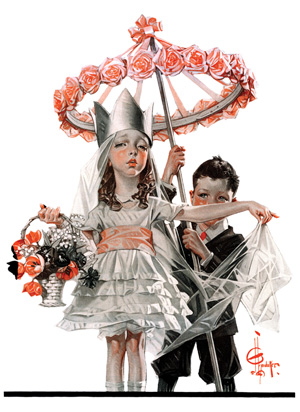
The little girl started to preen.
She wanted by all to be seen.
Said the boy, who was skittish,
“You are not even British
And therefore could never be queen.”
Congratulations to Elaine Person of Orlando, Florida! For her limerick describing J.C. Leyendecker’s June 11, 1921, cover image, she wins $25 and our gratitude for a job well done.
If you’d like to enter the Limerick Laughs Contest for our upcoming issue, submit your limerick via our online entry form.
Here are some of our other favorites, in no particular order:
Proud Mary has just been selected
As “Queen of the May,” as expected.
With her manner quite dour
And a visage so sour,
It’s for sure she won’t be re-elected!—Catherine Darling, Sandy Hook, Connecticut
Pretending that she is a bride,
The girl struts with absolute pride.
Meanwhile for the groom,
There’s impending doom:
When she said no kissing, she lied!—Angie Gyetvai, Old Castle, Ontario, Canada
I’m having a very bad day
As escort to Queen of the May,
A terrible mission.
I’d rather be fishin’
Or any place far, far away.—Gene Newman, Parsippany, New Jersey
Promenading to “Here Comes the Bride,”
The little gent’s role wounds his pride.
But to carry her train
Seems a much lesser pain
Than to be the groom trapped by her side.—Marcia Gunnett Woodard, Swayzee, Indiana
I might as well boldly confess:
I’ve a frog here to slip down her dress!
Will she be far too proud
To denounce me aloud?
Probably not is my guess.—Karen Cox, Readyville, Tennessee
In the gown, she will leap off the page.
With her rouge, she disguises her age.
It’s a shoot for an ad,
And her brother is mad
Since his pay is the minimum wage.—Ryan Tilley, Altamonte Springs, Florida
The circle of roses defined her,
While the flowers and flounces remind her:
Though she’s serving as Queen
And her realm is serene,
She’s ignoring that young lad behind her.—John & Elsa Morrow, Oakdale, Minnesota
Little “bride,” with her cheeks blushing red,
Announced that she’s soon to be wed.
Little “groom” just behind her
Is quick to remind her
He’d rather keep dating instead.—Gay Peterson, Loda, Illinois
He’s just a most unhappy fella,
There toting his sister’s umbrella.
While she reigns in glee,
It’s obvious he
Sings misery’s tune a cappella.—Carolyn Banks, Martinsburg, West Virginia
Good Morning, Captain Kangaroo! And Happy Birthday
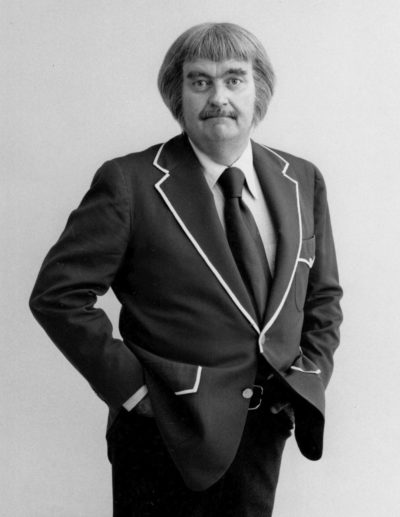
He reached the summit of children’s programming, and today, his picture is buried on Mount Everest. Bob Keeshan, better known as Captain Kangaroo, would blaze an Emmy-winning television trail that influenced generations of viewers.
Keeshan was born in 1927 and made his first TV breakthrough in a sort of famous anonymity. He played the original Clarabell the Clown on the wildly successful Howdy Doody show on NBC, debuting as the character in 1948. Clarabell only communicated by honking horns (once for yes, twice for no), but nevertheless became hugely popular. Keeshan kept the role for four years.
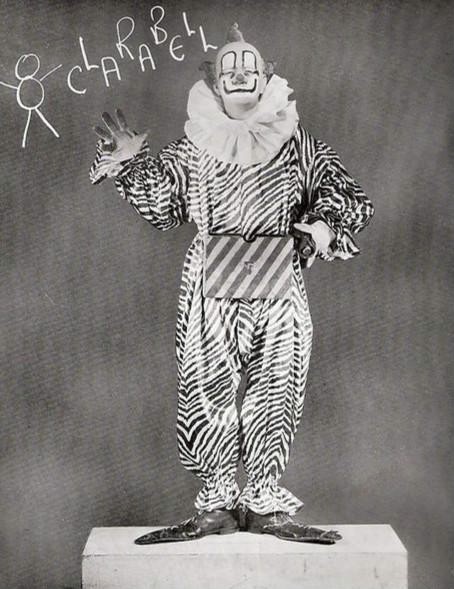
While working on other programs, Keeshan and his friend Jack Miller pitched a show and character called Captain Kangaroo to CBS. The character drew his name from the extremely large pockets, reminiscent of a kangaroo’s pouch, on his naval-style coat. The captain inhabited the Treasure House, later simply called The Captain’s Place, which was the base for a rotating series of characters, puppets, cartoons, and guests. Keeshan cut a distinctive figure with his blonde hair, mustache, and bright coat (originally blue, but red from May 17, 1971 onward).
The show debuted as a weekday morning program on October 3, 1955. It would go through various iterations over time, including a switch from a one-hour to half-hour format in 1981, followed by a move to weekends in 1982. Nevertheless, it was extremely popular throughout its nearly 30-year run. Keeshan made over 9,000 episodic appearances as the Captain. Perhaps remarkably, he was still winning Emmys for Outstanding Performer in Children’s Programming and Outstanding Children’s Entertainment Series into the 1980s.
The original Captain Kangaroo theme, “Puffin Billy,” by Edward White.
Part of the appeal of the show came from the rotating cast of characters. Mischief-making puppet Mr. Moose and his friend Bunny Rabbit had a habit of making ping-pong balls rain on the perennially unsuspecting Captain. The puppets, along with the Captain’s coat, dwell today at the Smithsonian.
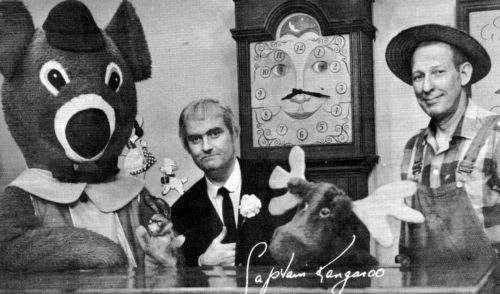
But it was Keeshan himself that held the whirl of activity together. His performance maintained a gentle and calm demeanor that the performer said was meant to echo the relationship between children and their grandparents. Off-screen, Keeshan drove advocacy for children’s programming and testified in matters related to tobacco advertising and other issues that he believed negatively impacted children.
By 1984, Keeshan declined to renew his contract, ultimately due to the timeslot reductions and shuffling facing the show. Nevertheless, he returned to CBS the following year for a Captain Kangaroo and Friends prime-time special and as host of the CBS Storybreak program. He later published a memoir, Good Morning, Captain, in 1995.
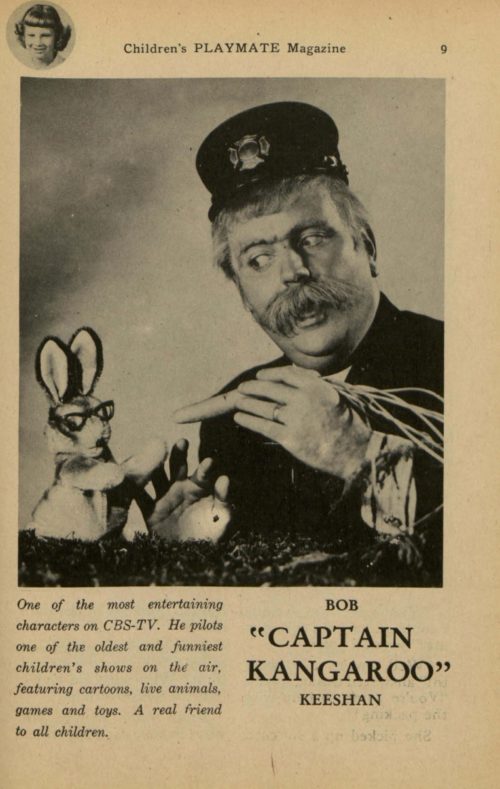
Keeshan died in 2004, leaving a vast television legacy. His grandson, Britton, forged a legacy of his own by being the youngest person at the time to reach the top of all Seven Summits, the tallest mountains on each continent. When he reached the top of Everest, Britton buried a picture of himself and his beloved grandfather as a tribute. It’s fitting that a man that reached such heights in his life should be remembered at the top of the world.
14 Pineapple Recipes from 1914
Try one of these 100-year-old recipes for your sweet tooth — Hawaiian caramel, marmalade, fritters, and more — starring the tropical fruit native to South America.
—
The Useful Pineapple
Originally published in The Country Gentleman, July 18, 1914
The pineapple should prove of inestimable value to the housewife, not only because of its possibilities along culinary lines, but for its medicinal properties as well. Served alone or combined with other ingredients it is a delicious addition to the menu.
On account of the vegetable pepsin that it contains, the juice of the pineapple should always be scalded when it is to be combined with albuminous substances, such as milk, egg, or gelatin.
To secure the full benefit of its fine flavor, the pineapple should be eaten fresh and without sugar. The easiest way to prepare the fruit is to cut the pine across, rind and all, according to the thickness desired, and then to peel each slice and remove the eyes. The slices may then be pulled apart with a silver fork or left whole. The woody center may easily be removed with an apple corer.
Canning
The fruit should either be cut in thin slices or shredded. After sufficient sugar has been added to sweeten, it may be cooked in an open saucepan and then placed in jars, or the fruit may be put directly into the jars and a hot sirup, made in the proportion of a cupful of sugar to a cupful of water, be poured over it. The covers should then be screwed down lightly and the jars placed on a pad of cloth or paper in a saucepan two-thirds full of warm water. Bring the water to the boiling point and boil 10 minutes. Remove the jars, screw the covers down tight, and set aside to cool.
Pineapple Marmalade
Pare and grate a sufficient number of ripe pineapples. Weigh the pulp, place it in a granite preserving kettle, and let simmer gently for 20 minutes. Add three-quarters of a pound of sugar for each pound of pulp. Boil seven minutes and put up in jars.
Sweet Pickled Pineapple
Prepare pineapples by slicing, peeling, and removing the cores. There should be 15 pounds. Boil together for 10 minutes: 7 pounds of sugar, 3 1/2 quarts of vinegar, and 1 tablespoonful each of cloves, allspice and stick cinnamon (broken). To this sirup, add the prepared fruit and boil until the fruit is tender. Skim out the fruit and place it in stone jars. Boil the sirup for 15 minutes and pour it over the fruit.
Pineapple Jelly
When pineapple is used alone, the jelly is inclined to be sticky and soft rather than firm. The addition of apple juice or gelatin will usually remedy the difficulty.
Wash the pineapples thoroughly, cut off the stems and blossoms and, without peeling, cut in thick slices. To each pineapple add four good-sized tart apples, a sliced lemon, including the rind, and 2 cupfuls of water. Let simmer several hours, strain and place again on the fire. To each cupful of juice, add a cupful of sugar that has been heated in the oven. Cook about two minutes longer, or until it jellies, taking care to remove the scum as it rises to the surface. Pour into jelly glasses.
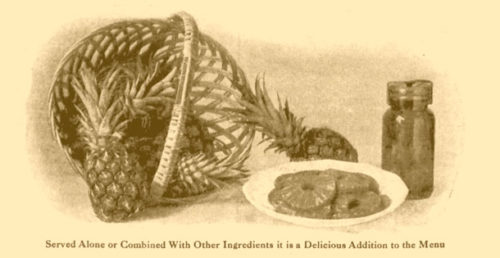
***
As an ingredient of puddings, creams, and salads the pineapple has no superior among the tropical fruits. Recipes for delicious combinations are here given:
Pineapple Marshmallow
Mix equal amounts of marshmallows, cut in quarters, and pineapple, cut in cubes. Add a little pineapple juice and set in a cold place to marinate. Just before serving, drain off the juice, sprinkle with candied cherries and English walnuts, chopped fine, and fold in cream that has been whipped until stiff.
Hawaiian Caramel
Soak a cupful of tapioca in a cupful of cold water over night. In the morning, place it in a double boiler with three cupfuls of brown sugar and sufficient water to cover.
Add the pineapple juice and hot water as required, stirring frequently. Cook until the tapioca becomes transparent. Pour over chopped or shredded pineapple. Serve with cream.
Pineapple Ice
Cook together for 5 minutes: 2 1/2 cupfuls of sugar, a quart of water, and the juice of two lemons. Take from the fire and add two grated pineapples. Strain and press through a cloth until all the juice is extracted. Partly freeze, then add the beaten whites of two eggs and complete the freezing.
Pineapple Ice Cream
Use any good recipe for ice cream. Put in the freezer and freeze. When it begins to congeal, add shredded pineapple in sufficient quantity to flavor and finish freezing.
Shredded pineapple served as a sauce with vanilla ice cream is good.
Pineapple Delight
Arrange on individual plates as many slices of pineapple as are needed. In the center of each slice place ice cream in the shape of a cone. Add a tablespoonful of whipped cream and sprinkle with crushed walnut meats.
Pineapple Cake
Make a cake after your favorite recipe. Bake in three layers. A little while before needed, put the layers together with a filling made of a pint of whipped cream and a cupful of grated pineapple, sweetened to taste.
Pineapple Fritters
Sift together 1 cupful of flour, 1/2 a teaspoonful of baking powder, and a pinch of salt. Add two well-beaten eggs, 1/2 cupful of sugar, and 1/2 cupful of milk. Beat well, then add a cupful of chopped pineapple. Fry in deep fat.
Salad Supreme
Cut a slice from the stem end of a large pineapple, then cut the fruit in two, lengthwise, leaving on the blossom. Remove the pulp, put the two cut ends together to form a boat-shaped receptacle, and fill with any of the following salad combinations, well-blended with mayonnaise dressing:
- pineapple, sliced bananas, and candied cherries
- pineapple, celery, nuts, and oranges
- pineapple, celery, sweetbreads, and olives
- pineapple, celery, chopped green peppers, and pimentos
Pineapple Salad
Form a nest from the white leaves of lettuce, place a spoonful of mayonnaise in the center, and a slice of pineapple on top. In the center of the slice, place a ball of cream cheese that has been rolled in chopped almonds.
California Salad
Arrange a slice of pineapple on leaves of lettuce, then with a sharp knife cut pimento into petal-shaped strips and arrange them on the pineapple in the form of a poinsettia. Use cream cheese and chopped nuts for the center.
Are Drive-In Movies Making a Comeback?
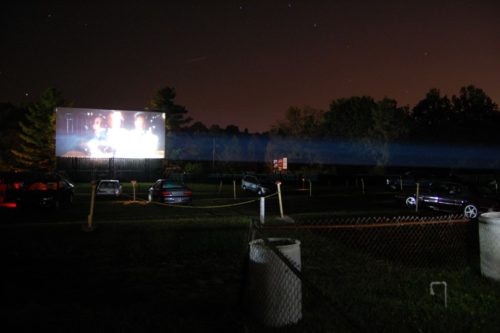
Summer nights and movies remain a perfect match. Blockbuster season brings out the biggest films and stars, but it’s also the prime time for that most American of cinematic venues: the drive-in. This month, we mark the 85th anniversary of that simple, but quietly revolutionary, idea of watching a film from the comfort of your own automobile.
In their heyday, drive-ins made for a unique family movie-going experience. Locations frequently included playgrounds, picnic tables, and other attractions that enticed families to arrive early. Costs could be lower per carload than buying individual tickets, making it more affordable. By the end of the 1950s, more than 4,000 drive-ins dotted the landscape in the U.S. For many, it become a regular, and iconic, event to head to the drive-in on the weekend.
The idea officially came to life on June 6, 1933. Richard Hollingshead of Camden, New Jersey, was trying to solve the problem of the discomfort that his mother experienced in traditional movie theater seating. Hollingshead worked for his father’s company, Whiz Auto Products. His mother’s dilemma and his natural workday surroundings coalesced into a vision of an outdoor screen where you could take in a film from your own car.
From that premise, Hollingshead experimented with projectors and screen types. He tried to figure out ways to deal with rain, as well as calculating what the ideal spacing between cars should be. Hollingshead received a patent for his idea in May of 1933, which led directly to opening Park-In Theaters in Camden the following month. The charge? One quarter per car and an additional quarter for each person.
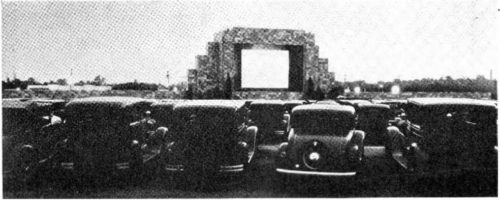
When Hollingshead’s patent was overturned in 1949, drive-ins exploded in popularity around the country. Thousands of new outdoor theaters popped up throughout the U.S., many of them specializing in so-called “B-movies,” as theater rentals for classier fare tended to be cost-prohibitive. Brandon Peters of the Cult Cinema Cavalcade podcast said that this material helped sell the drive-in to Middle America. He explained, “For genre fare, it was largely beneficial to the Midwest and smaller town crowd that lacked a 42nd Street where grindhouse, Italian horror, and other types of films with double-features were a 24-hour a day experience.”
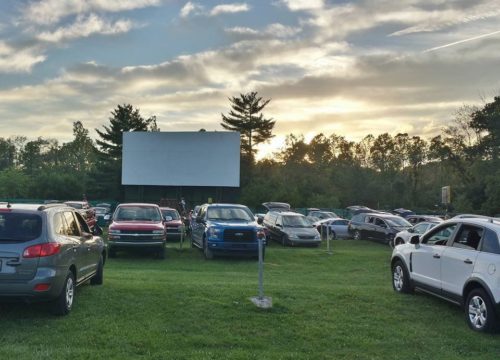
(@CenterBrook Drive-In, Martinsville, IN)
An article from the October 14, 1950, issue of The Saturday Evening Post looked at the popularity of the drive-in, including their reputation as “passion pits” (a notion parodied to some extent in the film Grease). This reputation seemed to be built in part on conventional theater owners who decried the drive-in as a fad and looked for ways to undermine an innovation that was draining customers to other locations.
The fortunes of the drive-in took a downturn in the 1980s as factors like cost, competition from larger, more comfortable cineplexes, and advances in picture and sound technology took their toll. A regular theater could more easily install new projectors and equipment that kept up with the expectations of the studios in terms of sound and picture, but it was more of a challenge for the drive-in setting in terms of the overall expense
Drive-ins continue to operate in all but a few states. Though far below the estimated peak of around 5,000 outdoor screens during the 1960s, the 348 remaining drive-ins continue to be a regular choice for families. Organizations like the United Drive-In Theatre Owners Association work to get the word out on the format.
And new drive-ins do occasionally appear. The Moon-Lite Drive-In Theater in Terre Haute, Indiana, expects to open in the near future near the original site of the North Drive-In, which closed in 1988. Proprietor Brent Barnhart grew up in Terre Haute and saw many social media posts from people that missed the North. He was in a unique position to do something about it, however, as he owns three conventional cinemas and acquired the Starlite Drive-In in Bloomington, Indiana, last year.
“[I’d] drive by that screen and think ‘What if?’,” Barnhart said. He explained that drive-ins still work because “they are sort of few and far between. They’re a destination, an experience, a place to bring your children and grandchildren. The concept is just still really cool . . . you can spread out your blanket and chairs and take in a movie under the stars.”
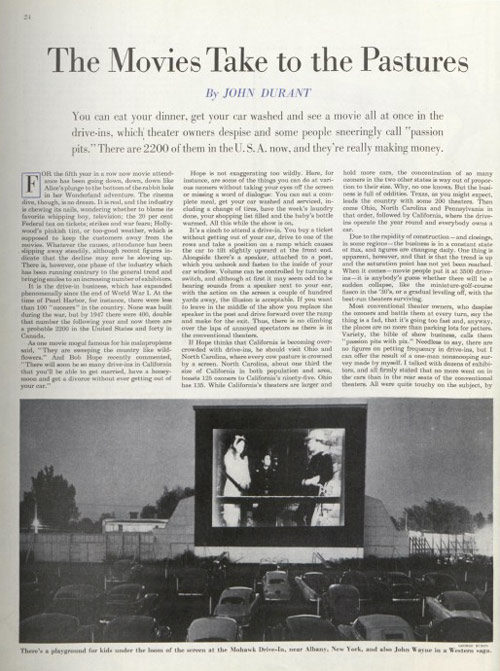
North Country Girl: Chapter 58 — Jobless in NYC
For more about Gay Haubner’s life in the North Country, read the other chapters in her serialized memoir.
My second Michael, my second true love, had tossed me to the wayside; I was too much baggage for him to handle on his pilgrimage to New York City in pursuit of his art. I was rescued by my Minneapolis pal Mindy, who had been my travel companion on that fateful Spring Break in Mexico.
After years dedicated to serious partying, Mindy had finally given herself a good shake and found her way back to college; she was taking classes during the day and waitressing at night. Mindy’s roommate was gone for the summer, so I would take over her tiny bedroom until she came back.
I dropped my two suitcases holding all my worldly possessions, fell into Mindy’s arms, and had a good cry. Mindy blotted my face with her waitress apron and said, “It will be fine. You will be fine. No more crying.” I gave her a trembling smile as she headed out to work and ordered myself to do all my heart-broken sobbing in bed or in the shower, anywhere Mindy couldn’t hear me and pity me.
Most of the time Mindy was gone, off to class and work, and I was left alone in her small but light-filled apartment. I spent my first days sprawled weepy on the couch, all the more sorry for myself that I didn’t have a single one of Michael’s blues albums to listen and cry to, songs of betrayal and abandonment, of false-hearted lovers, songs that would let me wallow in my sorrow. Eventually I gave myself a good talking-to and ventured out into the only thing that could soothe my ruptured soul, my favorite thing in the world: a Minnesota summer, balmy languid days that last till nine, when the sun finally says good night and sinks away.
Mindy lived a short walk from my beloved, glorious Lake Calhoun (now known as Bde Maka Ska), a just-right-sized expanse of sky blue water dropped in the center of Minneapolis. Lake Calhoun was surrounded by the softest grass, the leafiest trees, and had a tiny sandy beach with a lifeguard chair, rowboats to rent, and a snack bar.

I could have registered for fall classes at the University of Minnesota, I could have looked for a job, but I was mesmerized by summer, as sweetly familiar as a favorite childhood book and as fleeting as a dream. Chicago summers had been all sweat and steam and stink; here in Minneapolis I could dip in the lake during the day and slip into a sweater at evening.
I read whatever magazines and books were lying about Mindy’s apartment, swam in Lake Calhoun, and tanned on that little stretch of sand, lunching on Popsicles from the snack bar. I watched couples making out on blankets and cried as only a jilted young lover can cry. I made sure there were chips and bread and cold cuts and six-packs of beer in Mindy’s fridge, and ignored my dwindling savings that I had no prospects for replenishing. I waited for the phone to ring.
The phone did not ring, but a three-page letter from Michael arrived. Most of it was on the wonders of New York City: The art museums, the Modern, the Guggenheim, the Whitney, and the Metropolitan where you could pay just a penny to get in. The subway, which, unlike Chicago’s El, actually took Michael everywhere he wanted to go, once he figured out the confusing lines and local versus express stops. The dozens of different languages Michael delighted hearing on the street every day, the sneaky thrill he got eavesdropping on the German or Russian or Yiddish speakers. His sublet’s neighborhood of Greenwich Village, where there were jazz and folk and blues clubs, and outdoor cafes on every corner.

It was the Summer of Sam, the summer of the Bronx burning, of the hot August night of blackout and looting, the summer New York City teetered on the edge of bankruptcy. Michael was oblivious to the dangers, the dirt, the looming disasters. “You would love New York,” Michael wrote, “and I miss you so much.”
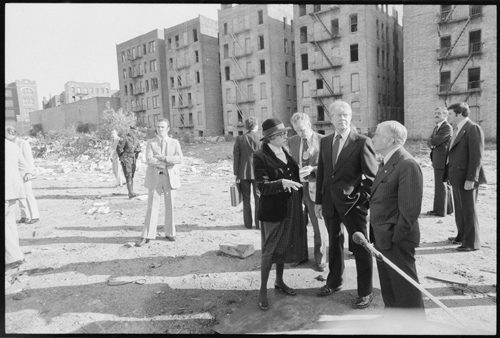
I wrote back, mostly about how much I missed him, as I had no other news outside of what flavor Popsicle I had eaten for lunch. Our letters criss-crossed the country, full of love and longing. I read Michael’s letters aloud to Mindy, always a sympathetic ear, on the few nights we spent together. She sipped the beer I gratefully supplied and flipped through the magazines she never had time to read.
“You’re going to New York,” Mindy assured me. “Wouldn’t it be cool if you got a job here?” and she held up the latest issue of Viva magazine, with the pouting face of minor starlet Barbara Carrera on the cover.
As Mindy predicted, the long-distance call and the summons to New York finally arrived. I heard Michael sniffling, he had a catch in his voice. “I am so sorry, I don’t know what I was thinking of, I love you, I want to be with you, please come to New York. The place I’m staying in is really small, I’ll find someplace for the two of us, it’s going to be great, please say you’ll come.” A tsunami of joy washed over me and I started to cry too. I had missed Michael dreadfully. For weeks my mind and heart had been unmoored, drifting through the dark seas of rejection and loss. Now I was rescued, swimming toward a lifeboat of love, Michael holding out his hand to pull me in.
I opened my pink Samonsite suitcase to pack up the bikinis and cutoff jeans I had been living in, and there on the top was my modeling portfolio. I leafed through the acetates holding the garishly lit and cheaply printed photos of me in surgical scrubs or lounging on a hideous “Rent-to-Own” plaid couch or eating a McDonald’s Filet-O-Fish, my own mouth gaping like a bass, and knew I had zero chance of finding modeling work in New York. I had to get a job, and the two skills I had were waitressing and magazine writing.
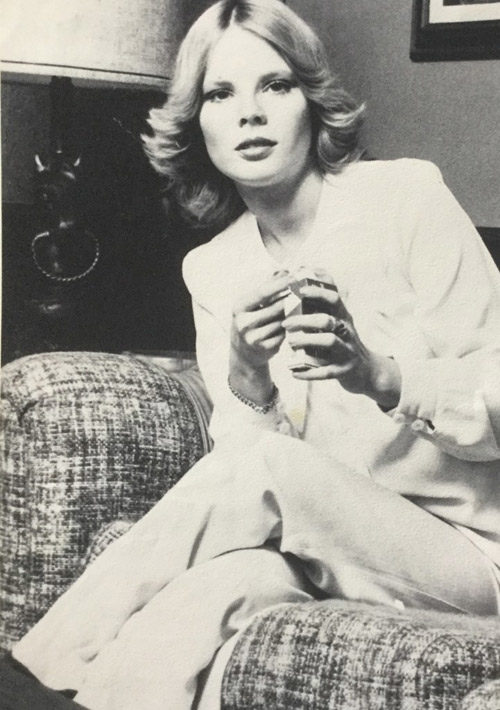
Under my modeling portfolio was a manila envelope with everything I had written for Oui. I sat on the floor and replaced all the photos of me with these short humor pieces and girl sets, placing the few that carried my byline at the front, and the most titillating girl-on-girl photos at the back of the portfolio.
A silvery bell of an idea popped into my head. I picked up the phone and called Los Angeles, mentally promising Mindy a few extra beers. I got my old Oui editor, John Rezek, on the phone and made quick work of the how-are-you small talk; it was long-distance daytime rates and I really didn’t care how much progress had been made on his epic poem about the first dog in space.
I said, “I’m moving to New York. I want to find a job at a magazine. Do you know anyone I can send a resume to?” John didn’t. He had never worked in New York. But Oui editor Gerald Sussman had, and he was standing right there. John put Gerald on the phone.
“Hi Gay, yeah listen, give Gordon Lish at Esquire a call. We’re great friends. Just mention my name and he’ll see you, help you out.”
Gerald’s connection at Esquire, the same magazine that had lured Michael to New York, was a good omen, a blessing on my next move to Greenwich Village and into what had to have been the Guinness World Record’s smallest studio apartment. It was in a brick building on West 10th Street, which confusingly runs perpendicular to West 4th Street. Michael’s sublet was a single room that held nothing but a convertible couch; we when unfolded the bed (which we did immediately) it took up the entire space, wall to wall. The bathroom had a shower, sink, and toilet you had to sit on sideways if you wanted to close the door. The kitchen was an alcove where a half-size two-burner stove and dorm fridge huddled against a sink, lit dimly by the apartment’s only window, which had never been washed and overlooked an airshaft. It was still the perfect cozy nest for reunited lovers, but if two people had to share it indefinitely, there would be knives at the throat. Michael said, “It’s just till the end of the month, then we’ll move into a bigger place.”
In the still light and sultry September evening, Michael walked me up Eighth Avenue to Chelsea, which was all bright, cheap Cuban-Chinese restaurants, a long-gone cuisine that specialized in ropa vieja and fried rice. All along the side streets, card tables, folding chairs, and wooden crates were set up for what Michael told me were never-ending domino games; each game had twice as many kibitzers as players. We turned left on 20th Street and threaded our way through the domino tables to the middle of the block. Michael held me by the shoulders and placed me on the far right of an iron gate to peer inside past the grey stone front building. “See the courtyard?” he asked. “We’ll be living in the carriage house in the back. It’s called a mews.” Carriage houses and mews sounded so romantic we had to hurry back to the love nest, promising ourselves that we would come back to dine at La Tas de Oro or Mi Chinata as soon as we could afford it.
Financially, we were running on fumes. I had left Chicago with $800, which had been drastically reduced by thank you groceries for Mindy, rowboat rentals, snack bar Popsicles, and a plane ticket to New York. Michael was broke; landing that Chelsea apartment (monthly rent $400, the same amount as James’ luxury high rise back in Chicago) had required two months’ security, plus electricity, phone, and cable, which Michael had balked at until he discovered that no television in Manhattan could get reception without it, and Michael needed old movies and the National League.
The day after our lovely, loved-filled reunion, I invested in a stack of likely magazines and a ream of typing paper, balanced my trusty Smith Corona on my knees, and started sending resumes and cover letters out into the void, addressed, as John Rezak had advised, to each magazine’s managing editor. While I typed, Michael perched next to me on the folded-up couch, drawing board across his lap, cross-hatching an illustration for the next Harry Crews column; this would bring in $250, which was exactly what Michael had to pay out in child support.
“I’ll waitress,” I told Michael. “I’ll waitress until I get a real job,” positive that within a month or two I would be snapped up by a magazine. It turned out that it was harder to get a waitress gig than land a job in publishing. Every Greenwich Village bar and restaurant recognized me on sight as a non-New Yorker, and therefore a rank amateur. I never even got to fill out an application. The manager would say, “Where was the last place you waitressed? Minneapolis?” as if my last job had been slinging goat curry in Karachi. I was even rejected at every single one of the Village’s coffee shops, whose owners thought delivering a fifty-cent cappuccino to a table was beyond my capabilities.

It took me a week of non-responses to my resumes and being given the bum’s rush at bars before I worked up the desperate nerve to cold call Gerald Sussman’s friend. I gave myself a pep talk: I could do this. I had banged uninvited on the doors of dozens of photographers. I had threatened a receptionist with a can of Reddi-Whip. I had smuggled drugs from Mexico! I could phone a perfect stranger and ask him for a job. I called Esquire and was connected to Gordon Lish, who like everyone else in the world back then, picked up his own phone. “Hello?” said a plummy voice. I took a deep breath.
“Hello Mr. Lish, my name is Gay Haubner and I was a writer for Oui and Gerald Sussman told me to call you to see if I could interview for a job at Esquire.”
I sounded like a squeaky cartoon mouse rushing through a nursery rhyme at a recital.
“Well,” Gordon Lish drawled. “Then I better see you. Come up tomorrow at eleven.”
Rockwell Video Minute: New TV Set
When Americans were first getting TV sets in their homes, Norman Rockwell was there to capture the moment perfectly.
See all of the videos in our Rockwell Video Minute series at www.saturdayeveningpost/rockwell-video.
Preview Our July/August 2018 Issue
Our most recent issue looks at the complications of the “simple life,” modern American nomads, the rise of astrology, and giving second chances to former inmates. You’ll also great new fiction, cartoons, humor, and our classic cover illustrations celebrating America. Watch our issue preview video and then subscribe!
12 Underused Produce Picks That Will Revolutionize Your Side Dishes
An abundance of flavors awaits you as soon as you can work up the gumption to snatch that odd-looking root vegetable or unrecognizable leafy green from the grocery shelf. Expand your culinary horizons with confidence by swapping in some produce stars you didn’t know you needed.
1. Daikon radish

These giant root vegetables are popular in most Asian cuisines, where they are often pickled or stir fried. You can prepare them in the same manner as carrots: roasted, grated into slaws and salads, or cooked into stews and soups. Daikon radish is easy to grow in the garden, and it even improves your soil.
Recipe: Japanese salad
2. Persimmons

An oft-overlooked fall fruit that is native to most of the eastern U.S., persimmons are perfect for Midwestern Thanksgiving sides and desserts. Persimmon pudding is a classic dish, but these sweet tomato lookalikes can be used caramelized in salads too.
Recipe: Persimmon cookies
3. Celeriac

At first glance, this celery root might look hideous, but underneath the tough skin is an ivory flesh full of nutrients and dietary fiber. The tuber can be fried or roasted like potatoes or mashed and puréed for soups.
Recipe: Celery root puree with pear anjou
4. Fennel

This unique vegetable has enjoyed popularity in recent years as chefs recognize its versatility. The mild licorice flavor of raw fennel fronds and bulbs are a tangy addition to salads, but chopped, roasted bulbs take on an excitingly sweet flavor that begs to be paired with seared fish filets.
Recipe: Apple and fennel salad
5. Chayote squash

Even though this Mexican gourd has been cultivated for centuries, you may have only recently started seeing them in grocery stores. Chayote is the poster child for squash versatility, taking on any flavors you can throw at it. Sauté it with cumin and paprika, or make stuffed chayotes in lieu of stuffed green peppers.
Recipe: Chayote pie
6. Turnips

If you’re tired of constant potatoes, try swapping in some low-carb turnips for your next mashed or roasted side. The tuber and the greens of this easy spring grower deliver a mustardy kick. You can even chop some raw and serve them on your next vegetable tray.
Recipe: Spinach and turnip soup
7. Kohlrabi

Another easy-going brassica that’s showing up in more and more farmer’s markets, kohlrabi excels in Indian curries. The bulbous head can also be grated into slaws or even sliced, battered, and fried like zucchini.
Recipe: Curtis Stone’s homemade-chicken-soup-makes-me-feel-better soup
8. Chard

The nutritional value of this colorful green rivals that of spinach and kale, but somehow chard never received the same attention. Its unique sweetness and antioxidant properties make it a no-brainer for sautéing, creaming, and even raw-eating.
Recipe: Turkey and cider-braised greens
9. Yuca (cassava)

Baked yuca fries are an exciting, sweet alternative to the potato variety. You can find these ancient tubers at most international or Latin American grocery stores. After scoring and peeling yuca, cook them any way you would a potato.
Recipe: Baked yuca fries
10. Watercress

Even if you’re not treating hair loss or bronchitis, this little leafy green packs a big, peppery punch in soups, salads, and everything else. Serve fresh watercress snippets on your star dishes for a glorious presentation at your next dinner party.
Recipe: Roasted pumpkin salad
11. Jicama

This Latin American produce favorite adds an apple-like crunch to a variety of dishes. Chop it up thinly (after peeling) and add it to guacamole or salsa, or make jicama matchsticks for spring rolls and garden wraps.
Recipe: Jicama dill “potato” salad
12. Pawpaw

The native tree fruit that delivers the taste of the tropics in the temperate U.S. is still, somehow, a relative secret in America’s kitchens. The flesh of pawpaw fruits is a cross between a banana and a mango, which means you should be taking advantage of this native in breads, pudding, and ice cream as soon as possible.
Recipe: Pawpaw pudding